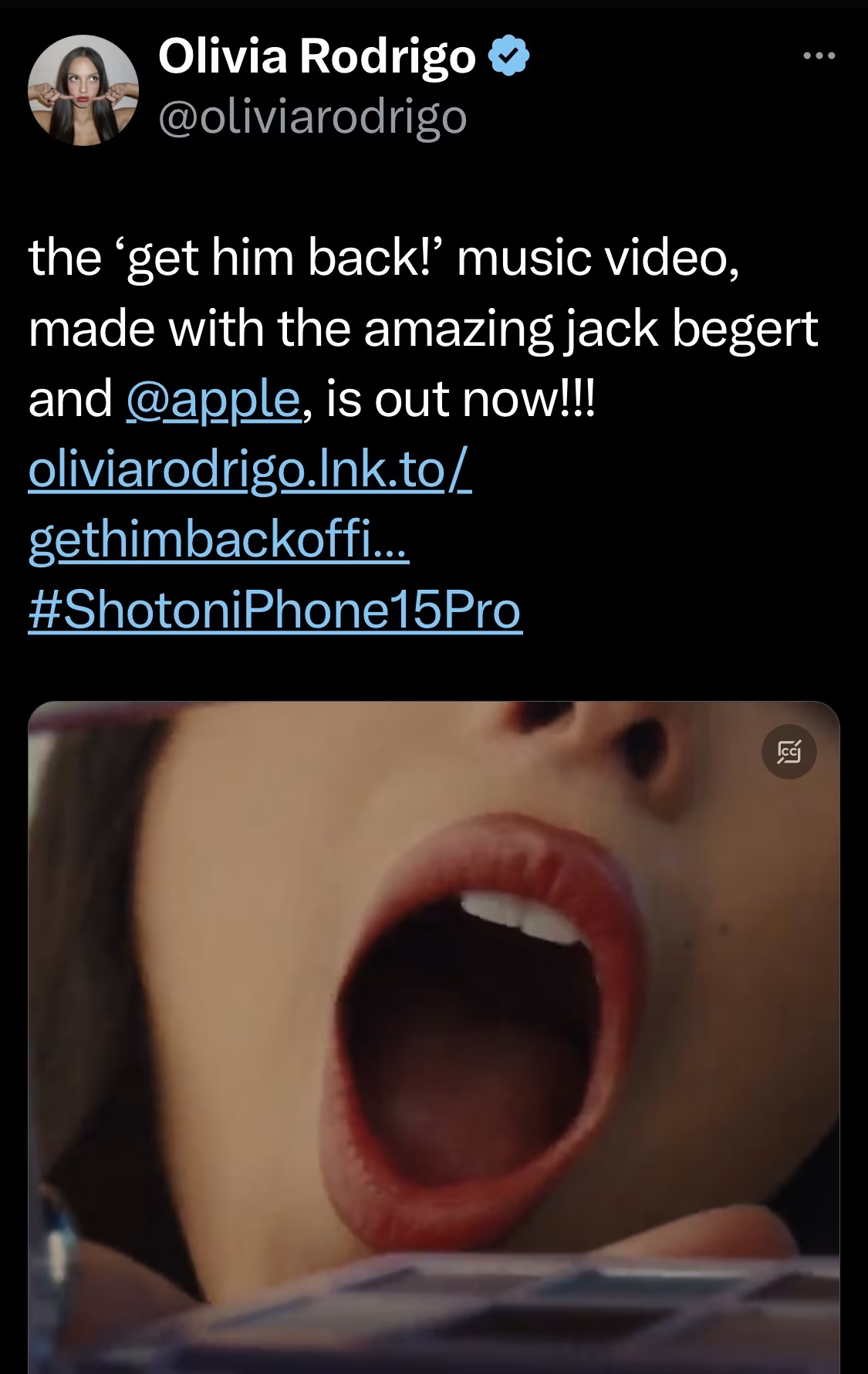Social media strategy templates are available for virtually any task—from content production to reporting to team onboarding. If you want to regain time in your schedule, make it your mission never to start from scratch.
Consider this: When you spend an hour formatting a spreadsheet, you lose an hour that you could have spent on your social media marketing strategy. Starting with a template provides much-needed direction to jump right into the work that matters.
In this article, I’m sharing every social media marketing template I’ve ever made. These templates are fully customizable and informed by industry best practices so that you can save time and effort.
Key Points
- A social media template is a pre-designed resource that serves as a starting point for various social media marketing tasks.
- The most common way to understand what you must include in a social media strategy template is by answering the 5Ws: Why, Who, Where, What, and When.
- Utilizing social media, strategy templates can save time and provide direction, allowing marketers to focus on more critical aspects of their work.
What Are Social Media Templates?
Social media templates are a pre-designed resource that serves as a starting point for various social media marketing tasks. These can range from everyday content creation to long-term strategic media planning and reporting to frameworks for collaborating with other teams and partners.
According to the 2024 Social Media Productivity Report, nearly half (48%) of social media marketers sometimes or rarely have enough time to finish their work. They’d respond to customers and plan strategic initiatives with more time.
When you’re already stretched thin, every minute counts. Social media marketing templates streamline the creation of new content or resources, helping you make the most of your time.
What to Include in Your Social Media Strategy Template?
You require a template to get you started and guide you and your whole team.
That’s why you must start with social media goals and circle around everything you need to achieve them. The most common way to understand what you must include in a social media strategy template is by answering the 5Ws.
- Why: Why are you investing in social media? What are your social media goals?
- Who: Who is your target audience? Decode your audience/customers and understand their behaviour.
- Where: Where are you going to share your content? Identify the social media platforms where the majority of your audience hangs out.
- What: What content are you going to share on social?
- When: When are you going to publish your content? Do you know the best time to post on social media?
The above 5 things are the most crucial information, but not limited to, that must go in your social media content strategy template.
You can go ahead and map out more information like
- What specific tools and training will you require to achieve your goals?
- Who will be responsible for specific tasks?
- What is the budget of your brand’s/client’s social media strategy?
- What is the expected return on investment (R.O.I.)?
Now that you know what information to include, let’s learn how to find every piece of information and mould it into a structured social media strategy template.
How Do I Create a Social Media Strategy?

I’ve run several social media campaigns for personal brands and businesses I’ve worked for. Each one had different goals, which is to be expected. But regardless of your end goal, you can use the same big ideas to formulate your social media marketing strategy.
#1. Establish a Clear Purpose
I can’t tell you how many social media managers I’ve seen just throw as many things at the wall as possible and hope something sticks: giveaways that get short-term engagement, services that guarantee followers and likes, or jumping on whatever the most recent bandwagon is. What these lack is a clear purpose
To outline how social media marketing will help your brand, write SMART goals or goals that are Specific, Measurable, Achievable, Realistic, and Time-Bound. Some example SMART goals you might have for your social media strategy could be:
- Within six months, achieve a 20% growth in social media engagement through targeted advertising and influencer partnerships to enhance brand awareness.
- Within three months, website traffic will increase by 15% and online sales by 10% by implementing effective call-to-action (CTA) strategies and conversion tracking on Facebook, Instagram, and X (Twitter).
- Within 12 months, identify and hire at least 50 brand advocates who consistently share our content and refer new customers through implementing a brand advocacy program.
The rest of strategy planning is simple when you have an overarching purpose. This also makes adjusting your social media strategy easy without losing sight of your long-term goals. Each time you make a social media decision, ask yourself: Does this align with the purpose? Yes, keep it. If not, get rid of it.
#2. Understand Your Target Audience
Before sitting down to map out your social media strategy, figure out who you want to see your content (and whether they want to see it). If your company already understands your target consumer well, boom—you’re off to a great start. Use that research for your social media strategy. If you don’t have a target audience already, curate an audience persona to flesh out their “character.” For true crime fans, think of it like being a profiler.
From there, orient each part of your strategy—from which platform you post on and when to what metrics you’re trying to hit—toward that target audience.
Aim to create a strategy that answers all of these questions:
- Does your strategy respect your audience’s backgrounds and experiences, and what value does it add to their lives?
- What are you hoping they take away from your content, and what are they hoping to take away from it?
- What existing knowledge do you expect them to come with, and what can you teach them?
#3. Research Your Competitors
As much as we all want to feel like unique, creative geniuses, something inspires everything. But don’t just copy what your competitors are doing—ask yourself why they’re doing it that way and what the thought process is behind it.
Here are some questions you can consider when filling out the social media strategy templates:
- Who are your competitors trying to target?
- Why is their strategy working?
- What social media platforms are they using and why?
- What social media platforms aren’t they using and why?
- How often do they post content to each platform?
- Are they replying to comments?
- What is the ratio of posts trying to sell something compared to fun, interesting, or educational content?
Look for gaps and opportunities that your competitors—whether they’re crushing it on social or not—aren’t taking advantage of. What are they missing that you think your target customers would enjoy?
Let’s say you’re a vegan restaurant, and other vegan joints only post images of their food. They may have many followers, likes, and sales, but you know you can do more. You can post behind-the-scenes videos, recipe tutorials, and images of your clientele with rich anecdotes as captions, Humans of New York style, to show your audience you’re more than a menu.
Or maybe it’s even simpler. Let’s say a competitor isn’t getting a ton of engagement on their posts, and you notice they never end their captions with a discussion question. Try including a simple call to action in your captions to encourage more comments and increase engagement.
#4. Research Your Audience
Outlining a social media strategy without doing audience research first is like going out of your way to get your friend an iced brown sugar oat milk, shaken espresso when they hate oat milk and brown sugar, and it turns out they drink tea. But unlike your pal, your audience won’t just smile and say thanks—they’ll keep scrolling.
You need to know what type of content your audience likes so you don’t leave them scrolling for something better. Take these steps to get to know your audience:
- Engage in social listening: Use social media management tools that offer social listening to monitor what people are saying about your brand, industry, or competitors. Create a list of relevant keywords (your brand name, industry-related terms, competitors, trending topics) to help narrow your search.
- Send surveys and gather feedback: Use survey software to send market research surveys. Offering incentives like discounts, freebies, or contest entries in exchange for taking your survey can help get responses.
- Analyze engagement metrics: Look at posts from your account and competitors’ accounts that get the most engagement. What topics resonate the most? Do they prefer short, funny videos? Or educational deep dives?
- Segment your audience: Not all your followers are the same, so you’ll want to divide them into groups based on their behaviors or preferences, like followers who engage more with your trending content rather than business updates. This can help you more precisely target your audience rather than trying to appease everyone with broad messaging.
#5. Choose the Right Social Media Channels
Just as there’s a “right” audience for your content, there’s a right channel (well, channels) for it as well. I don’t have to spell out what each platform does, but knowing their ins and outs will be key when using social media for your business.
Make sure the social platforms you choose are right for your brand. Consider some of the following questions:
- Does the platform host your target audience?
- Is it working for your competition?
- If it’s not working for the competition, is it because your target audience isn’t there or because competitors are doing something wrong?
- Does it fit well with the content you plan on making?
- Is it worth your time and effort to create content for it?
#6. Determine Your KPIs
So, what exactly does social media “success” look like? Bringing in more business, sure, but that’s a little vague. You want to see your social media strategy hitting smaller goals. To gauge how your strategy pays off, define some quantifiable key performance indicators or KPIs.
Here are some examples.
| What is it? | Example KPI | |
| Impressions | How many people saw your post | 1,000 unique users per post |
| Likes | How many people liked your post | 100 likes per post |
| Shares | How many people shared your post | 20 shares per post |
| Comments | How many people left comments on your post | Get 15% more comments |
| Engagement | Total engagements (likes, shares, and comments) on your post | Boost engagement by 10% |
| Click-through rate (CTR) | How many people click your link | Average 40% CTR per post |
| View duration | How much of your video people watched | Average view duration of 20% per video |
| Conversions | How many people converted after engaging with your post | 25% of website sales originate from social media |
With easy-to-use reporting tools, you can track your progression toward KPIs.
You need to please the social media algorithms to promote your content organically, and the algorithms care about engagement. Due to how the algorithms work, social media engagement, like shares, comments, and likes, directly impacts every other KPI, so engagement should be your main focus.
#7. Conduct a Social Media Audit
As marketers, analytics are our bread and butter (if you’re wondering why you’re salivating right about now). A social media audit highlights the data behind your efforts.
It’s probably a good idea to audit your accounts before starting a campaign to understand where you’re starting. Most importantly, you should perform an audit after each campaign to ensure your strategy pays off.
Other than your KPIs, here are some things to track when you audit yourself:
- What types of content you’re posting, and on which platforms
- How much engagement each post received
- How many followers have you (or gained/lost)
- Any positive or negative comments
- Whether you’re reaching your target audience or not
A human’s perspective makes sense for some of these. For the more granular work, a social media management tool can make the auditing process much easier.
#8. Perfect Your Publishing Cadence
If you email me at 5 PM on a Friday, you can expect a response Monday morning at the earliest. And if you spam me with 11 messages that definitely could’ve been consolidated into one, there’s a chance they’re all going in the trash.
The same goes for your social media strategy. When and how often you post can greatly affect the performance of your content.
Here’s how to figure out a publishing cadence that works best for your brand:
- Analyze peak times: Use analytics tools within social platforms or external tools like HubSpot or Later to find the days and times your audience is most active. Remember, time zones and holidays can affect engagement.
- Prioritize quality over quantity: It’s better to post high-quality content a couple of times per week than bad content every five minutes.
- Test and learn: Conduct A/B tests by posting at various times and days of the week and monitor engagement to see which posting times perform the best.
- Plan ahead with a content calendar: Use a social media scheduling tool to plan your content in advance. Look for a tool that lets you schedule posts and view and adjust the appearance of your feed.
- Stay on top of trends: You must be able to adjust to changes, such as trending topics or relevant news, to your brand. Reserve space in your content calendar to create trending content.
Free Social Media Strategy Templates
A documented social media strategy sets the foundation for consistent messaging, branding, and reach over time. The following social media strategy templates will help you build overarching and network-specific strategies to optimize your social media presence.
#1. Social Media Strategy Template
Whether you’re starting from scratch or looking to improve your current social marketing strategy, you need this essential social media template.
The social media strategy template makes it easy to:
- Set social media goals that lead to real business results
- Better target your ideal customer
- Gather intel on the competition so you can stay ahead
- See what’s already working and what’s not
- Create or improve your social media profiles
- Develop a thoughtful content strategy and set a publishing schedule you can stick to
- Track your progress and adjust your plan as needed
Lamphills Social Media Strategy Template
#2. Social Media Audit Template
A social media audit is a step-by-step review of your business’s social presence. It’s a straightforward process, but it can become quite the undertaking when you factor in all of your brand handles across every social network.
Lamphills Social Media Audit Template
This spreadsheet template provides a framework for your audit strategy, making the process more approachable. If you fill out one tab daily, you can complete the process in less than two business weeks.
#3. Social Media Campaign Brief
A well-orchestrated social media campaign requires more than brand consistency. To truly maximize the value of your efforts, it needs to be aligned with business goals from the initial planning stages through execution.
This social media campaign brief template encourages you to incorporate insights from your organization. It also helps set up a reporting infrastructure to simplify performance measurement at the end of your campaign.
Lamphills Social Media Campaign Plan Brief Template
#4. Competitive Analysis Template
Conducting a competitive analysis for social media will help you identify gaps in your own strategy and stay one step ahead of your competition. It’s an easy way to get useful insights into your business and online audience.
Lamphills Competitive Analysis Template
This template will guide you through a full social network analysis of your competition and help you identify your strengths, weaknesses, opportunities, and threats.
#5. Facebook Marketing Strategy Template
Facebook is synonymous with social media. It retains its crown as the world’s most popular social network, with over three billion monthly active users.
This template provides a framework for revamping and revitalizing your Facebook marketing strategy. It will help you identify goals, audit competitors, and build out an ad strategy, wrapping up with a final, presentable strategic overview and rollout plan.
Lamphills Facebook Marketing Strategy Template
#6. Brand Pitch Template
Finding a good brand partnership can help build your portfolio and credibility if you’re a relatively new influencer.
However, many pitches fall flat because they haven’t been thoughtfully crafted and tailored for the specific brand. If you’ve sent lots of pitches and haven’t seen results, you might be missing one of the 7 elements every brand pitch must include.
Lamphills Brand Pitch Template
#7. YouTube Marketing Strategy Template
A lot goes into video marketing on YouTube. There’s talent sourcing, production needs, branding considerations—the list goes on.
Success on the world’s second-largest search engine starts with a commitment to organization. This workbook template gives you a framework to audit your channel, define your audience, and create a performance-optimized distribution plan. Once you fill it out, you’re left with a resource to keep internal stakeholders aligned and on task.
Lamphills YouTube Marketing Strategy Template
#8. Influencer Marketing Brief Template
The most effective influencer marketing strategies view influencers as more than contractors with tasks to fulfil. You must treat your influencer partnerships as partners to get the most out of them.
Doing so means defining your expectations upfront while establishing clear partnership guidelines that set both parties up for success. This brief template will help you document both, creating a valuable resource influencers can return to as they work to craft content that resonates with your audience.
Lamphills Influencer Marketing Brief Template
#9. Product Launch Checklist
Social media is the new mall. It’s where consumers go to find and research their next purchase, making it an indispensable channel for product launches.
This checklist offers a step-by-step guide to making the most out of your company’s next big launch. It provides actionable guidance on setting goals, managing timelines, and reporting on the performance of your efforts so you can better understand the promotional tactics that work with your audience.
Lamphills Product Launch Checklist
#10. Social Media Policy Template
All organizations need a social media policy. This official company document must guide your organization’s social media use. It is vital for maintaining your brand voice and reducing social media risks.
Lamphills Social Media Policy Template
Fill in the blanks and easily set the guidelines for your brand on social media.
This customizable social media policy template covers all the basics to make it quick and easy to establish how your organization is represented online.
#11. Social Media Contest Templates
Contests on social media are ideal ways to drive engagement, followers, leads, and brand awareness. The tricky part was properly promoting them across different social networks…until now!
Lamphills Social Media Contest Templates
These templates also include contest rules, so you can avoid any unnecessary headaches when picking your lucky winners.
#12. Social Media Proposal Template
This template is for freelance social media professionals and social media agencies.
A social media marketing proposal is a document in which you propose a set of social media marketing services for a potential client. You’ll outline the specifics of the work you propose for the client, including a timeline and budget and how you plan to work together.
With the right details in place, you’re well-positioned to establish a good working relationship with a new client.
Lamphills Social Media Proposal Template
#13. Social Media RFP Template
Social media RFPs are where effective social media strategies, campaigns, and collaborations begin. But that doesn’t mean creating one has to be hard and tedious. In fact, with the right tools, crafting a winning social media RFP can be simple and even fun.
Lamphills Social Media RFP Template
With this RFP template, you can easily create your own in just minutes and find the right agency to partner with to meet your goals.
#14. Social Media Bios Template
Your bio plays a big role in compelling people to follow and engage with your brand on social media.
A bio on any network should address five key pieces of information:
- Who you are
- Where you work
- What you do
- Your brand’s tone
- How someone can get in touch with you
To ensure you cover your bases, we’ve created easy-to-use templates from the bios of top brands on social media so you can create your own in no time.
Simply fill in the blanks and copy and paste the final product into your profile.
Lamphills Social Media Bios Template
#15. Social Media Report Template
This social media template presents results to your boss, clients, teammates, or stakeholders.
Yes, it will include hard data captured in the analytics report template. But it also includes space for context and analysis. Both are important to include when presenting to people who aren’t as close to social media as you are.
Use this template to make recommendations, share lessons learned, and recommend future tactics.
Lamphills Social Media Template
What Is an Example of a Social Media Strategy?
Here is an example of a social media strategy.
Olivia Rodrigo #ShotoniPhone15Pro campaign
Apple wanted to flaunt the iPhone’s camera capabilities and knew it had to resonate with the younger demographic obsessed with photography and music. Enter Olivia Rodrigo—a contemporary musical sensation. Through their collaboration, Apple seamlessly blended tech and pop culture, using platforms like YouTube, where visuals and melodies reign supreme. This helped showcase Apple’s camera and Olivia’s music while boosting brand recognition among younger demographics.
- Audience: Tech-savvy and pop culture-conscious Gen Z users
- Goal: Increase awareness of the iPhone 15 and its advanced camera capabilities
- Tactics: Celebrity partnerships; high-quality videography and photography

Bottom Line
Love these social media templates? Save even more time on social media with these Lamphills comprehensive templates. You can manage all your accounts from a single dashboard, schedule posts, engage your audience, improve performance, and more. Try it free today!
Similar Articles
- LinkedIn Social Media Strategy: A 7-Step Guide to Creating a Winning LinkedIn Social Media Strategy (+ Examples and Template)
- How to Be a Social Media Manager for a Small Business With No Experience in 2024
- Best SEO Forcasting Tools And Templates






